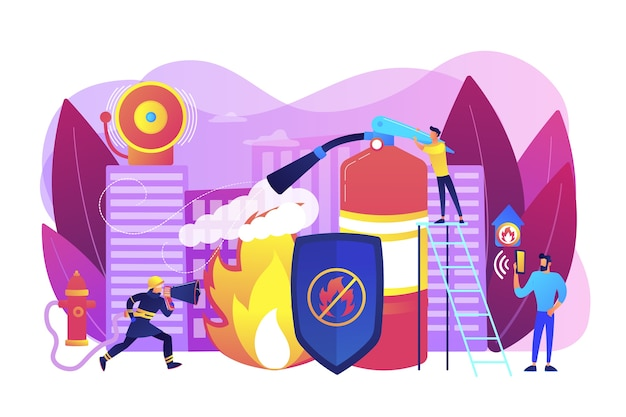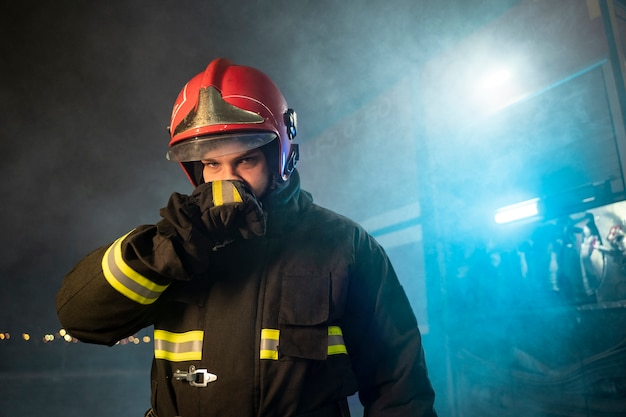Fire safety is a critical aspect of workplace safety, and advancements in fire safety training are essential for ensuring that employees are well-prepared to handle emergencies. With evolving technology and new methodologies, fire safety training has seen significant improvements that benefit workplaces in numerous ways.
In this blog, we’ll explore the latest advancements in fire safety training, how they enhance fire safety practices, and why they are crucial for your workplace.
The Importance of Fire Safety Training in the Workplace
Before diving into the advancements, it’s essential to understand why fire safety training is vital. Workplace fires can result in significant injuries, fatalities, and financial losses. Proper emergency first aid first aid and fire safety training equips employees with the knowledge and skills to prevent fires, respond effectively in an emergency, and minimize damage.
Incorporating fire safety training into your workplace safety protocols not only ensures compliance with legal regulations but also fosters a safety-conscious culture. This training is especially critical in industries where the risk of fire is higher, such as manufacturing, construction, and chemical processing.
Recent Advancements in Fire Safety Training
The landscape of fire safety training has evolved significantly over the years. The following sections highlight some of the most impactful advancements that have reshaped how fire safety is taught and practiced in the workplace.
1. Virtual Reality (VR) and Augmented Reality (AR) in Fire Safety Training
One of the most exciting advancements in fire safety training is the use of Virtual Reality (VR) and Augmented Reality (AR). These technologies provide immersive training experiences that allow employees to practice responding to fire emergencies in a controlled, virtual environment.
- VR Training:Virtual Reality creates realistic fire scenarios where employees can practice using fire extinguishers, navigating smoke-filled environments, and executing evacuation procedures. This type of training is highly effective as it offers hands-on experience without the risks associated with real-life drills.
- AR Training:Augmented Reality overlays digital information onto the physical world, allowing employees to learn about fire hazards in their actual work environment. AR can be used to identify potential fire risks and demonstrate the proper use of fire safety
Both VR and AR enhance fire safety training by providing interactive, engaging, and practical learning experiences. They allow employees to learn at their own pace, repeat scenarios as needed, and build confidence in their ability to respond to fires.
2. Online and E-Learning Platforms
Another significant advancement in fire safety training is the widespread adoption of online and e-learning platforms. These platforms offer flexibility and accessibility, allowing employees to complete fire safety courses at their convenience.

Implement fire safety techniques to prevent workplace incidents
Online training modules cover a wide range of topics, including fire safety regulations, the proper use of extinguishers, evacuation procedures, and the importance of regular fire drills. These courses can be tailored to the specific needs of your workplace, ensuring that employees receive relevant and comprehensive training.
E-learning platforms also provide the ability to track employee progress, administer quizzes, and issue certifications upon course completion. This makes it easier for employers to ensure that all staff members are adequately trained and up-to-date with the latest fire safety practices.
3. Advanced Fire Simulation Technology
Advanced fire simulation technology has revolutionized fire safety training by offering more realistic and varied training scenarios. These simulations can replicate different types of fires, such as electrical, chemical, and flammable liquid fires, allowing employees to practice responding to specific risks relevant to their workplace.
Fire simulation technology also includes the use of smoke generators, heat lamps, and sound effects to create a more immersive training environment. This realistic approach helps employees better understand the intensity and urgency of a real fire emergency, preparing them to act swiftly and effectively.
4. Mobile Fire Safety Training Apps
With the increasing use of smartphones and tablets in the workplace, mobile fire safety training apps have become a popular tool for on-the-go learning. These apps offer interactive modules, video tutorials, and quizzes that employees can access anytime, anywhere.
Mobile apps are particularly beneficial for remote or field-based employees who may not have easy access to traditional training methods. They also provide a convenient way for employees to refresh their knowledge regularly, ensuring that fire safety remains top of mind.
5. Integration of Fire Safety with Other Safety Training Programs
Another advancement in fire safety training is its integration with other workplace safety programs. This holistic approach ensures that fire safety is not treated in isolation but as part of a comprehensive safety strategy.
For example, many workplaces now incorporate fire safety training with fall protection training, confined space training in Vancouver, and first aid training courses in Surrey. This integration provides employees with a well-rounded understanding of workplace hazards and how to respond to various emergencies.
The Role of Fire Safety Training in Enhancing Workplace Safety
The advancements in fire safety training discussed above have a direct impact on workplace safety. Here’s how these innovations benefit your workplace:
· Improved Employee Preparedness
Advanced fire safety training methods, such as VR and AR, ensure that employees are better prepared to handle fire emergencies. By practicing in realistic scenarios, employees gain the confidence and skills needed to respond effectively, reducing the likelihood of panic and confusion during a real fire.
· Enhanced Risk Awareness
Integrating fire safety with other safety training programs increases employees’ awareness of workplace hazards. This heightened awareness helps employees identify and address potential fire risks before they escalate into emergencies.
For instance, an employee who has completed confined space training in Vancouver may be more vigilant about the fire hazards in confined areas, leading to proactive risk management.
· Greater Compliance with Regulations
Staying up-to-date with the latest advancements in fire safety training helps your workplace remain compliant with safety regulations. Regular training ensures that employees understand current fire safety laws and best practices, reducing the risk of fines and legal issues.
· Reduced Workplace Accidents
By providing comprehensive fire safety training, workplaces can significantly reduce the number of fire-related accidents and incidents. Proper training ensures that employees know how to prevent fires, use fire safety equipment correctly, and execute evacuation procedures efficiently.
· Positive Safety Culture
Investing in advanced fire safety training demonstrates a commitment to employee safety, fostering a positive safety culture within the workplace. When employees see that their employer prioritizes safety, they are more likely to adopt safe behaviors and take an active role in maintaining a safe work environment.
· Implementing Advanced Fire Safety Training in Your Workplace
To take advantage of these advancements, it’s important to implement them effectively in your workplace. Here are some steps to help you integrate advanced fire safety training into your safety program:
· Assess Your Workplace’s Fire Safety Needs
Start by conducting a thorough assessment of your workplace’s fire safety needs. Identify the specific fire risks present in your environment and determine which employees require training. This assessment will help you choose the most relevant and effective training methods.

Fire evacuation layout for an office space
· Choose the Right Training Methods
Based on your assessment, select the advanced fire safety training methods that best suit your workplace. For example, if your employees work in a high-risk environment, consider implementing VR training to simulate realistic fire scenarios. If your workforce is dispersed across multiple locations, online and mobile training platforms may be more practical.
· Integrate Fire Safety with Other Training Programs
Consider integrating fire safety training with other safety programs, such as basic first aid in surrey, intermediate first aid, and advanced first aid courses. This integration will provide employees with a comprehensive understanding of workplace safety and ensure that they are well-prepared for various emergencies.
· Provide Ongoing Training and Refresher Courses
Fire safety training should not be a one-time event. Provide ongoing training and refresher courses to ensure that employees remain up-to-date with the latest fire safety practices. This is especially important in industries where fire risks are constantly evolving.

Fire extinguishers are important for putting out fires timely
· Evaluate the Effectiveness of Your Training Program
Regularly evaluate the effectiveness of your fire safety training program. Collect feedback from employees, conduct drills to assess their response to fire emergencies, and make adjustments as needed. Continuous improvement is key to maintaining a high standard of fire safety in the workplace.
At Metro Safety Training, we offer comprehensive fire safety training programs that incorporate the latest advancements in the field. Our expert trainers will equip your employees with the knowledge and skills they need to prevent fires and respond effectively in an emergency.
In addition to fire safety training, we provide a wide range of safety courses, including fall protection training, basic first aid in Surrey, intermediate first aid, and advanced first aid. We also specialize in confined space training in Vancouver and first aid training courses in Surrey.
Contact Metro Safety Training today to schedule your training sessions and protect your employees with the best safety education available.









